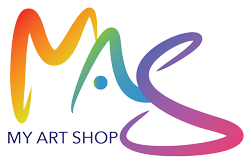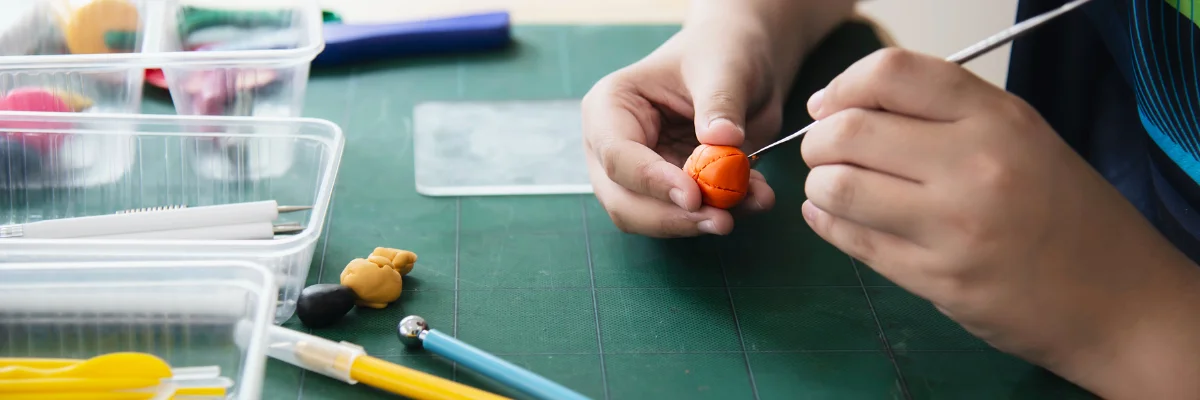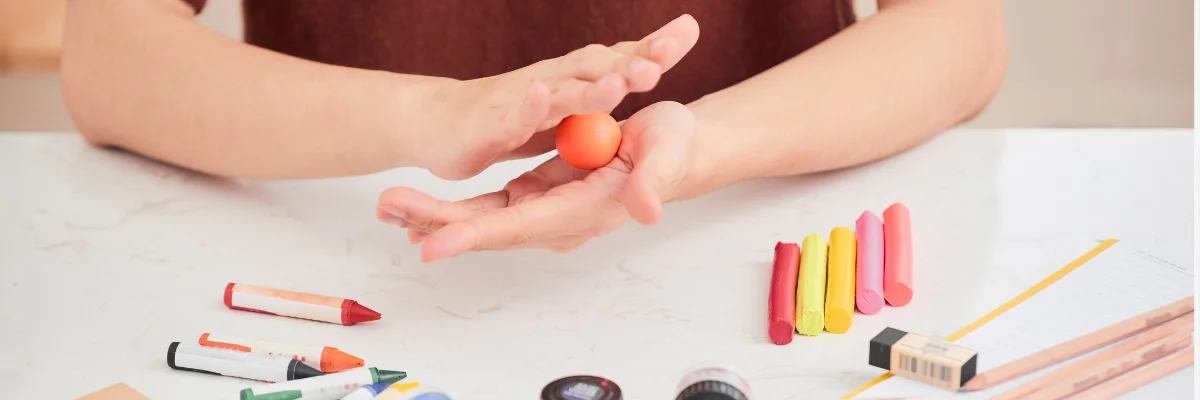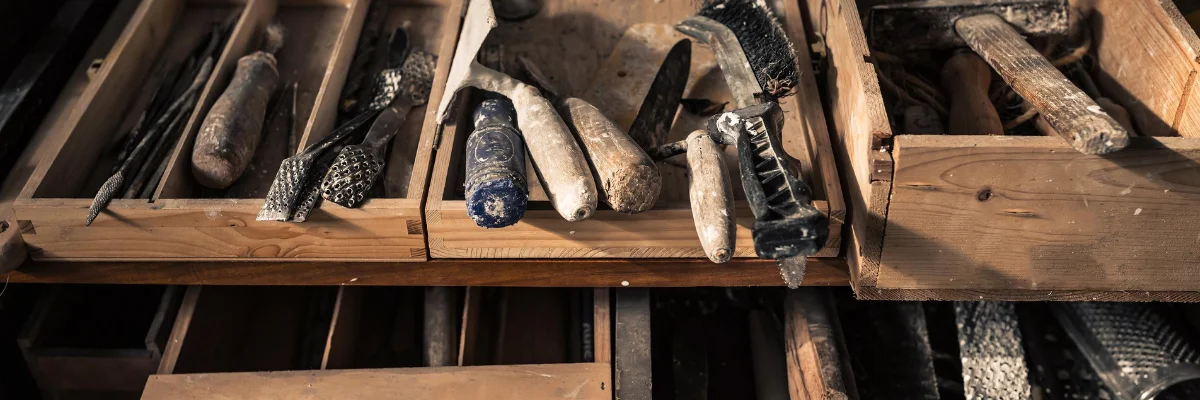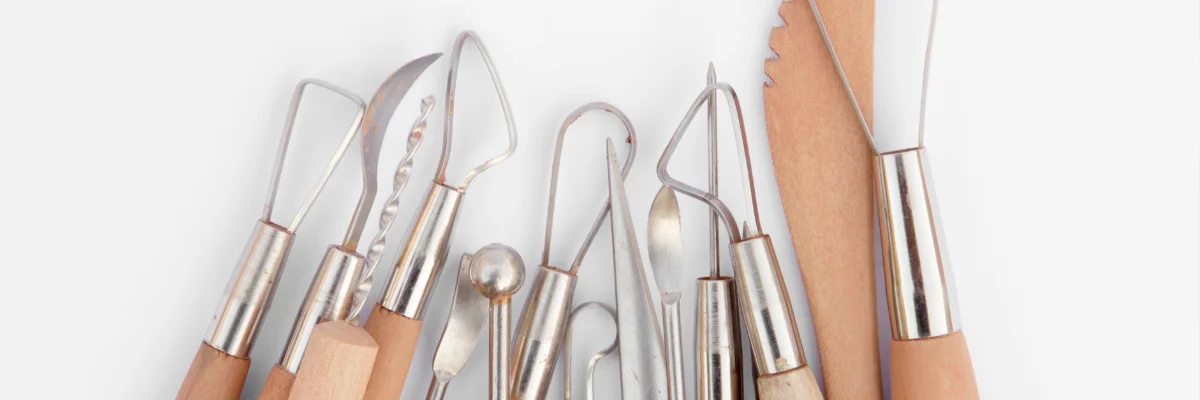
The Essentials of Pottery Tools
When it comes to pottery, having the right tools can make a world of difference. Whether you’re a seasoned potter or just starting, understanding the essential tools and their importance will elevate your clay game to new heights.
Why Tools Matter
Pottery tools are the unsung heroes of the clay world. Using the correct tools is vital for mastering best practices for throwing and shaping clay. The appropriate tools can significantly impact the ease and quality of your work. According to Daisie, essential tools for every potter include a potter’s wheel, various shaping and trimming tools, sponges, and rib tools. These tools are crucial for achieving professional-quality pottery. Without them, you might as well be trying to paint the Mona Lisa with a toothbrush.
Choosing the Right Tools
Selecting the right tools can be a daunting task, but fear not! Here’s a table to guide you through the essentials:
| Tool Type | Purpose | Importance Level |
|---|---|---|
| Potter’s Wheel | Throwing and shaping clay | Essential |
| Shaping Tools | Sculpting and refining forms | High |
| Trimming Tools | Trimming excess clay | High |
| Sponges | Smoothing surfaces | Medium |
| Rib Tools | Shaping and smoothing | High |
Investing in essential pottery tools, such as a needle tool for cutting and scoring, is vital for effectively applying best practices in pottery (Daisie). Beginners are advised that the most important tools are their hands, which can create natural curves on pots. Proper care of your hands will enhance your pottery-making skills (The Little Pot Company).
Tool maintenance is also crucial. Proper care can significantly impact the usability of your tools, regardless of the manufacturer’s brand (Quora). For more insights on maintaining your pottery tools, check out our section on keeping tools sharp.
By choosing the right tools and taking good care of them, you’ll be well on your way to creating beautiful, professional-quality pottery. And remember, a well-maintained tool is a potter’s best friend!
Basic Pottery Tools
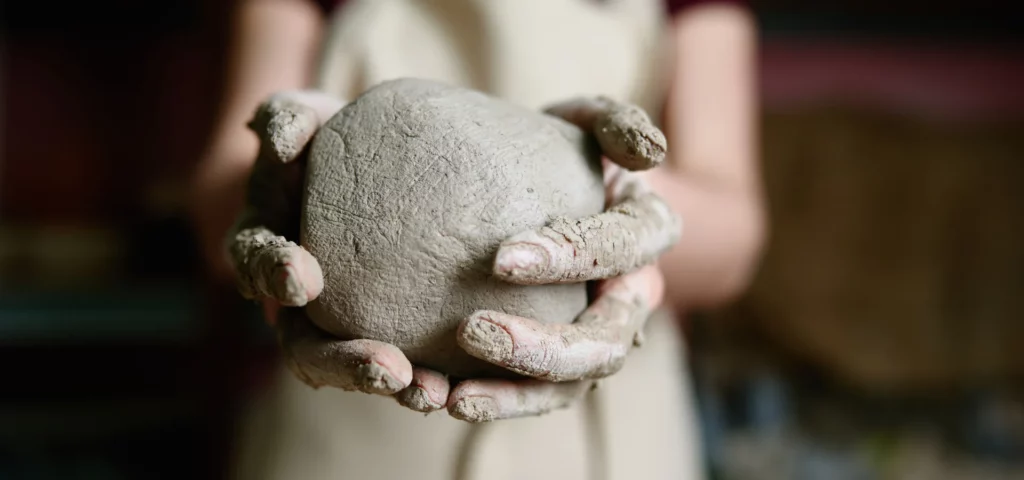
Mastering the art of pottery starts with having the right tools in your arsenal. Let’s dive into the essential pottery tools that every potter, from novice to expert, should have.
The Potter’s Wheel
A potter’s wheel is the cornerstone of any pottery studio. It’s like the DJ booth for your clay parties. It allows you to shape and form clay with precision and ease. For beginners, a small electric wheel with variable speed control and the ability to reverse the wheel direction is recommended (The Little Pot Company).
| Feature | Importance |
|---|---|
| Variable Speed Control | Crucial for precision |
| Reversible Direction | Useful for lefties and for certain techniques |
| Compact Size | Ideal for beginners |
Shaping and Trimming Tools
Shaping and trimming tools are the unsung heroes of the pottery world. They help you refine the shape of your pottery and add intricate details. Essential tools for every potter include the Needle Tool, which is great for fine detail work and the Mud Shark Needle Tool, which features a retractable needle for safety (Susan O’Hanlon Pottery).
| Tool | Function |
|---|---|
| Needle Tool | Fine detail work, scoring |
| Pear-shaped Trimming Tool | Large clay removal, decorative trimming |
| Loop Tool | Hollowing out clay, refining shapes |
For quality options, brands like Dolan and Kemper are highly recommended.
Essential Sponges
Sponges are the Swiss Army knives of the pottery world. They’re used for smoothing, shaping, and even cleaning up your clay masterpieces. Natural silk sponges and specialty sponges from brands like Xiem and MudTools are particularly valued for their versatility (Susan O’Hanlon Pottery).
| Sponge Type | Use |
|---|---|
| Natural Silk Sponges | Smoothing surfaces, absorbing excess water |
| Xiem Sponges | Detail work, shaping |
| MudTools Sponges | Versatile use, durability |
Sponges are indispensable for both throwing and cleanup, making them a must-have in any potter’s toolbox.
Having the right basic pottery tools can significantly elevate your clay game. For more advanced tools and techniques, explore our section on clay sculpting tools.
Advanced Pottery Tools
For those who have moved beyond the basics and are ready to elevate their clay game, advanced pottery tools are a must-have. Here, we’ll explore three indispensable tools: The Mighty Needle Tool, Versatile Rib Tools, and The Trusty Wire Tool.
The Mighty Needle Tool
The Needle Tool, affectionately known among potters as the “Mud Shark,” is a versatile instrument essential for precision work. This tool is perfect for trimming, scoring, and even throwing. The Mud Shark Needle Tool, with its retractable needle, is particularly popular for its safety and dual functionality (Susan O’Hanlon Pottery). Ideal for both beginners and seasoned artists, it ensures that you can poke, prod, and perfect your clay creations without worry.
Versatile Rib Tools
Rib tools are the unsung heroes of the pottery world. These tools, available in metal, wood, and rubber, are crucial for shaping, smoothing, and scraping clay. One highly recommended item is the triangular wooden rib, praised for its adaptability in various shaping tasks (Susan O’Hanlon Pottery). Ribs are almost as essential to wheel-throwing as the clay itself, making them a must-have in any potter’s toolbox.
| Rib Material | Uses |
|---|---|
| Metal | Smoothing and refining forms |
| Wood | Versatile shaping |
| Rubber | Smoothing curves and soft clay manipulation |
For more on shaping tools, visit clay sculpting tools.
The Trusty Wire Tool
The Wire Tool might look simple, but it packs a punch when it comes to functionality. This tool is primarily used for cutting creations off the wheel, ensuring a clean separation from the potter’s wheel. The 7″ Dirty Girls wire tool is particularly favoured for its thin wire, making it perfect for delicate cuts (Susan O’Hanlon Pottery). For larger, more demanding cuts, a heavier-duty wire tool is recommended.
| Wire Tool | Usage |
|---|---|
| 7″ Dirty Girls Wire Tool | Delicate cuts |
| Heavy-Duty Wire Tool | Larger, more demanding cuts |
Embrace these advanced pottery tools and watch your clay creations transform from ordinary to extraordinary. Each tool brings its own unique benefits, enhancing your pottery experience and helping you achieve professional-quality results.
Specialty Pottery Tools
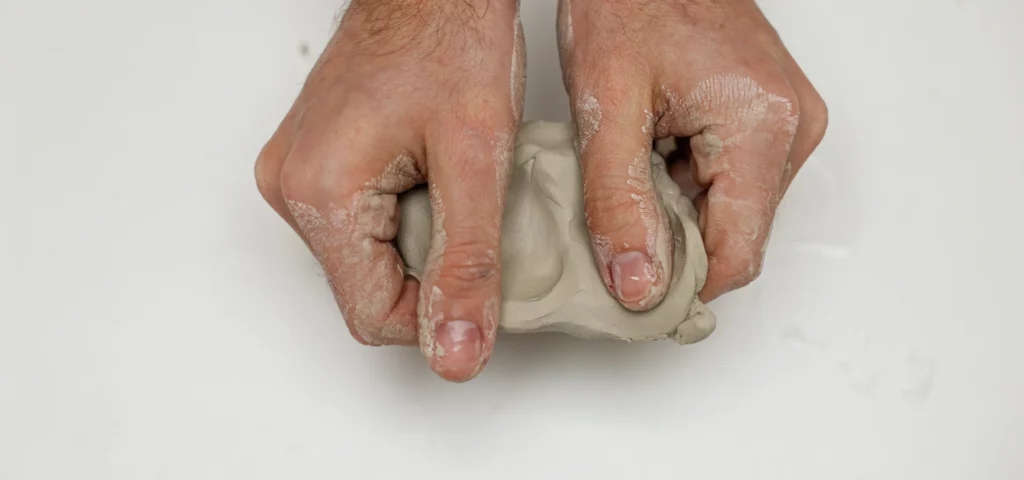
For those looking to elevate their clay game, specialty pottery tools are a must. These tools go beyond the basics and add that extra finesse to your creations. Let’s dive into the world of specialty tools and discover their magical powers.
The Pottery Paddle
The pottery paddle is your best mate when it comes to reshaping or compressing coil pots and slabs. This handy tool is particularly effective for evening out wall thickness while strengthening the walls of the pot. Imagine it as the personal trainer for your clay, ensuring everything is in tip-top shape.
| Function | Benefit |
|---|---|
| Reshaping coil pots | Ensures even wall thickness |
| Compressing slabs | Strengthens pot walls |
For more on shaping techniques, check out our guide on clay sculpting tools.
The Anvil Tool
Also known as the mushroom tool, the anvil is indispensable for building large coil pots. It compresses and strengthens the walls, allowing artists to curve or stretch the pot form from the inside. Think of it as the unsung hero that supports your clay from within, giving it the backbone it needs.
| Function | Benefit |
|---|---|
| Building large coil pots | Strengthens and compresses walls |
| Curving/stretching pot form | Allows intricate shaping from inside |
More about the anvil tool can be found on The Humble Mud.
The Rib Scraper
The rib scraper, often referred to as the kidney scraper, is a versatile tool in any potter’s arsenal. This tool is used to smooth and refine forms, particularly the interior of bowls. It also doubles as a sculpting tool to eliminate ridges left by coil building. Picture it as the magic wand that smooths out all the rough edges, leaving your pottery looking pristine.
| Function | Benefit |
|---|---|
| Smoothing interior of bowls | Refines form |
| Eliminating ridges from coil building | Provides a polished finish |
For more tips on using rib scrapers, see our detailed article on clay sculpting tools.
These specialty tools will not only enhance your pottery skills but will also make the process more enjoyable. Embrace the power of the paddle, the might of the anvil, and the finesse of the rib scraper to transform your clay creations.
Tool Maintenance Tips
Even the mightiest of pottery tools need a little TLC. Keeping your tools in tip-top shape not only extends their lifespan but also ensures your clay creations remain masterpieces. Let’s dive into some essential maintenance tips for your beloved pottery tools.
Keeping Tools Sharp
A sharp tool is a happy tool. Whether it’s your needle tool, trimming tool, or even your beloved wire cutter, keeping them sharp is crucial. High-carbon steel tools are particularly user-friendly as they hold an edge well and are easy to sharpen, though they can be prone to rust (Ceramic Arts Network).
- Sharpening Stones: Invest in a good sharpening stone to keep your tools razor-sharp.
- Regular Maintenance: Make it a habit to check the sharpness of your tools before each pottery session.
- Rust Prevention: For high-carbon steel tools, a light coat of oil can prevent rust.
| Tool Type | Material | Maintenance Tip |
|---|---|---|
| Needle Tool | High-Carbon Steel | Sharpen regularly, prevent rust |
| Trimming Tool | Stainless Steel | Check for dullness, easy to maintain |
| Wire Cutter | High-Carbon Steel | Keep taut, oil to prevent rust |
Cleaning Techniques
Pottery is a messy business, but that doesn’t mean your tools have to stay that way. Proper cleaning techniques can make all the difference.
- Immediate Cleaning: Clean your tools immediately after use. Allowing clay to dry on them makes cleaning infinitely more difficult.
- Gentle Scrubbing: Use a soft brush to remove clay residue. Avoid using abrasive materials that can damage the tools.
- Drying: Ensure tools are completely dry before storing them. Metal and wooden tools should not be left in wet environments (Ceramic Arts Network).
Storage Solutions
Proper storage is essential for maintaining the longevity of your pottery tools. Here are some quirky yet effective storage solutions:
- Tool Rolls: A fabric tool roll can keep your tools organized and protected.
- Magnetic Strips: For metal tools, a magnetic strip can be both a functional and stylish storage solution.
- Pegboards: Install a pegboard in your studio to hang tools for easy access and organization.
| Storage Solution | Benefits |
|---|---|
| Tool Rolls | Keeps tools organized and protected |
| Magnetic Strips | Stylish and functional for metal tools |
| Pegboards | Easy access and organization |
Proper tool maintenance can significantly impact their usability and durability, regardless of the brand (Quora). By following these tips, you’ll ensure your pottery tools remain in excellent condition, ready to help you create your next clay masterpiece. For more on clay sculpting tools, check out our detailed guide.
Fun with Pottery Tools
Pottery isn’t just about the technicalities; it’s about having a bit of fun while creating your masterpieces. Let’s dive into some creative uses of pottery tools, how you can repurpose household items, and how to experiment with textures.
Creative Uses
Pottery tools aren’t just for your traditional bowls and vases. Think outside the pottery wheel! Use your clay sculpting tools to create unique textures and patterns. For instance, a humble needle tool can be used to etch intricate designs into your clay pieces, adding a touch of elegance and detail. Rib tools, often used for smoothing, can also create wavy textures that give your pottery a unique, handmade feel.
- Needle Tool: Excellent for fine details and texturing.
- Rib Tool: Great for smoothing but also for creating wave-like patterns.
- Wire Tool: Not just for cutting clay, but also for creating grooves and lines.
Household Items as Tools
Who needs fancy gadgets when you have a kitchen full of potential pottery tools? An old fork or a butter knife can yield excellent results when working with clay (Quora). Here are some common household items that can double as pottery tools:
- Fork: Ideal for creating parallel lines or a combed texture.
- Butter Knife: Use for slicing and detailing.
- Toothbrush: Perfect for splattering slip or creating fine textures.
- Rolling Pin: Great for flattening clay slabs.
| Household Item | Pottery Use |
|---|---|
| Fork | Creating parallel lines |
| Butter Knife | Slicing and detailing |
| Toothbrush | Splattering slip, fine textures |
| Rolling Pin | Flattening clay slabs |
Experimenting with Textures
Textures can bring your pottery to life. Experimenting with different textures can set your pieces apart. Here are some ideas to get you started:
- Lace Patterns: Press a piece of lace into the clay to create intricate designs.
- Natural Elements: Use leaves, flowers, and even stones to imprint natural textures.
- Bubble Wrap: Press it into the clay for a unique, bubbly texture.
For added fun, try combining different textures on a single piece. The juxtaposition of smooth and rough surfaces can create visually appealing and tactilely interesting pottery.
By mixing and matching tools, whether they’re high-quality pottery tools or repurposed household items, you can elevate your clay creations to new artistic heights. And don’t forget, proper tool maintenance is key to keeping your creative journey smooth and enjoyable. For more tips on maintaining your tools, visit our section on tool maintenance.
